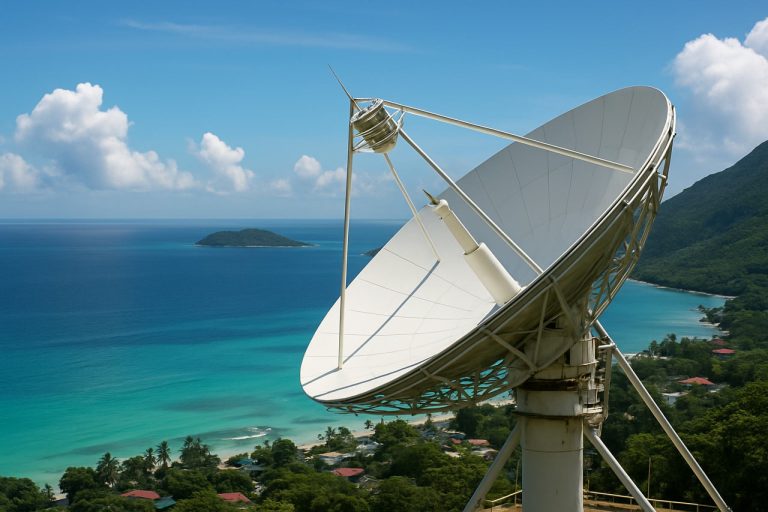
- Tesla faces significant challenges with a notable decline in sales and manufacturing issues, while Chinese competitor BYD gains ground.
- BYD’s “megawatt flash-charger” offers groundbreaking EV charging capabilities, providing 250 miles of range in five minutes.
- BYD surpassed Tesla in pure electric vehicle production, manufacturing over 1.77 million units last year.
- BYD’s entry into the U.S. market is stalled by a 100% tariff on Chinese imports, but it plans extensive charger deployment in China.
- The landscape of EV innovation is rapidly changing, putting pressure on Tesla to adapt and maintain its leadership.
- The competition underscores the urgent need for Tesla to innovate and respond swiftly to dynamic shifts in the industry.
As the sun sets on the first quarter of 2025, the road ahead for Tesla appears increasingly fraught with challenges. A steep decline in car sales and a series of embarrassing manufacturing mishaps have rattled the electric vehicle (EV) giant, but it’s the thunderous progress of Chinese rival BYD that has really captured global attention, threatening to steal Tesla’s thunder with its groundbreaking advancements in EV charging technology.
Imagine cruising along the highways of America, then abruptly halting due to dwindling battery life, only to witness a tantalizing innovation on the other side of the globe. This vision is becoming a vivid reality as BYD, the world’s foremost purveyor of electric vehicles, unfurls a new charging marvel—the “megawatt flash-charger.” With the ability to bestow 250 miles of driving range in a mere five minutes, these cutting-edge chargers have the potential to refuel vehicles almost as swiftly as a pit stop for gasoline, an achievement that outpaces Tesla’s current Supercharger network by a staggering fourfold.
While Tesla grapples with a 14.5% dip in North American sales and an even more stark 49% plunge across Europe, BYD is enjoying a remarkable ascension. Last year, BYD manufactured over 4.3 million new energy vehicles, with more than 1.77 million being pure electric—a figure that narrowly surpasses Tesla’s much-vaunted output.
But the awe-inspiring flash-chargers won’t be gracing American soil anytime soon. A hefty 100% tariff on Chinese auto imports looms large, effectively stalling BYD’s entry into the lucrative U.S. market. Despite this, within China, BYD’s rollout strategy is ambitious, with plans to establish these high-speed charging beacons in over 4,000 locations. This vision, while costly and demanding, heralds a pivotal shift in EV charging, promising to mitigate one of the industry’s long-standing impediments: extended charging durations.
For Elon Musk and Tesla, who have long held the mantle of innovation, the message is clear: standing idle in the fast lane of technological advancement is not an option. The pressure is mounting for Tesla to up its game in an electrified race that shows no sign of slowing.
The key takeaway for Tesla and its legions of loyal supporters is simple—innovation is relentless and the competition fierce. Keeping pace with this dynamic shifting landscape demands rapid adaptation and perhaps a sprinkling of that iconic Musk magic to regain the lead. In a world hungry for sustainable solutions, only the swiftest—and boldest—will thrive.
The Electric Race: Will Tesla Accelerate or Stall?
Insights into Tesla’s Current Challenges and Opportunities
As the electric vehicle industry evolves, Tesla finds itself at a challenging juncture. Facing a notable drop in car sales and production issues, Tesla is under pressure to innovate continuously. Meanwhile, Chinese EV giant BYD is making remarkable strides, particularly with its advanced charging technology.
BYD’s Megawatt Flash-Charger: A Game Changer
BYD’s “megawatt flash-charger” stands out for its ability to charge vehicles to provide 250 miles of range in just five minutes. This advancement surpasses Tesla’s Supercharger capabilities significantly, which currently require about 20 minutes to achieve a similar range on average. This innovation presents a powerful opportunity to redefine the EV charging experience, promising convenience akin to traditional refueling stations.
Market Trends and Expectations
1. Rapid Expansion of Charging Infrastructure: BYD plans to deploy these megawatt chargers across 4,000 locations in China, indicating an aggressive expansion strategy that could vastly enhance EV adoption rates domestically.
2. Global Market Dynamics: While Tesla remains a leader in the U.S. and Europe, BYD’s advancements are rewriting the global competitive landscape of the electric vehicle market. According to industry forecasts, the global EV market size is expected to grow from approximately $287 billion in 2021 to over $1.3 trillion by 2030 (Fortune Business Insights), driven by increasing environmental awareness and supportive governmental policies.
Pressing Questions from Readers
– What Does This Mean for Tesla’s Future?
Tesla needs to accelerate its innovation pace or risk falling behind competitors who are pioneering faster, more efficient solutions. This could involve ramping up R&D in battery technology and exploring partnerships to enhance its charging infrastructure.
– How Will the 100% Tariff Affect BYD’s U.S. Market Presence?
The existing tariff is a barrier for BYD’s immediate entry into the U.S. market. However, potential legislative changes or BYD’s strategic partnerships with U.S. companies might alter the landscape in the future.
Reviews & Comparisons: Tesla vs. BYD
– Features & Specifications: By comparison, Tesla’s network offers widespread availability in North America with over 40,000 Superchargers globally (as of 2023), whereas BYD is focused on regional market dominance in China.
– Performance & Efficiency: BYD’s charging speeds challenge the quickest currently available systems, which might pressure Tesla to advance its charging tech to maintain its market position.
Pros & Cons Overview
Pros of Advancements in Charging Technology:
– Reduced “range anxiety” with faster charging times
– Increased convenience for EV owners
– Potential boost in EV adoption rates globally
Cons:
– Significant initial investment costs for infrastructure
– Possible technological challenges in scaling and maintenance
Actionable Recommendations
– For Tesla Enthusiasts: Keep an eye on Tesla’s announcements for potential upgrades or innovations in battery and charging technology. Engaging with Tesla’s updates will help you anticipate and capitalize on new offerings.
– For Prospective EV Buyers: Consider future-proof technology when investing in an electric vehicle. Evaluate potential charging capabilities and infrastructure availability when selecting an EV, focusing on brands that demonstrate rapid innovation.
Quick Tips
– Stay updated on industry news via trusted sites such as Tesla and industry analysts.
– Explore governmental incentives for EV purchases in your region to maximize benefits.
– Test drive various EV models to understand the practical differences in charging times and range to choose the best vehicle for your needs.
With the industry evolving at lightning speed, informed decisions and strategic expectations will be crucial in navigating the rapidly changing world of electric vehicles.



